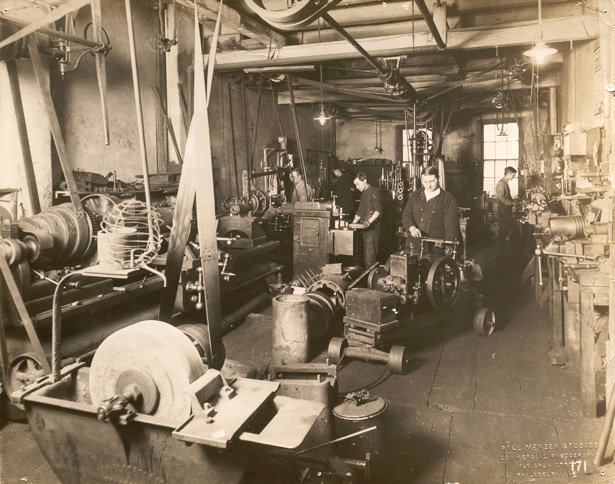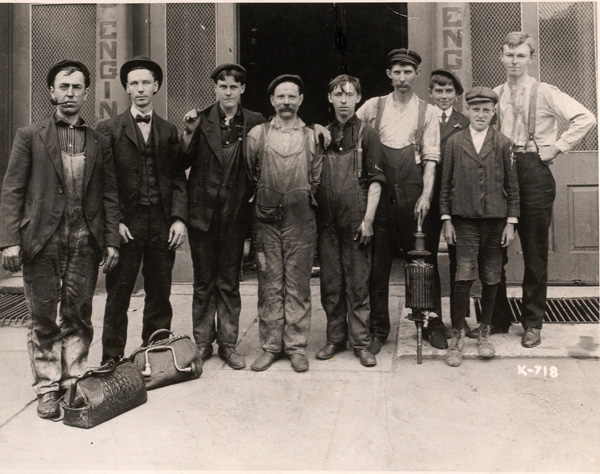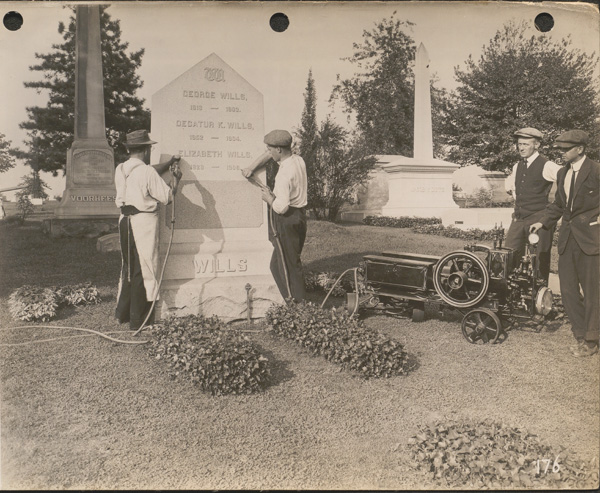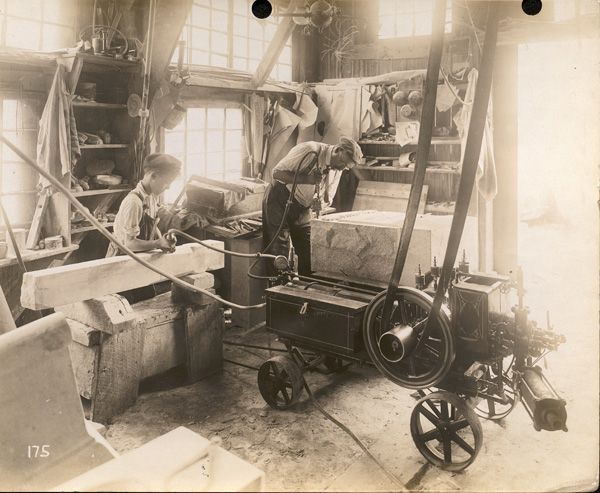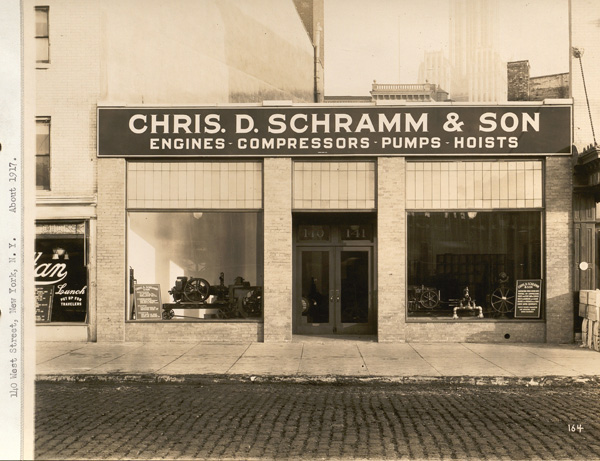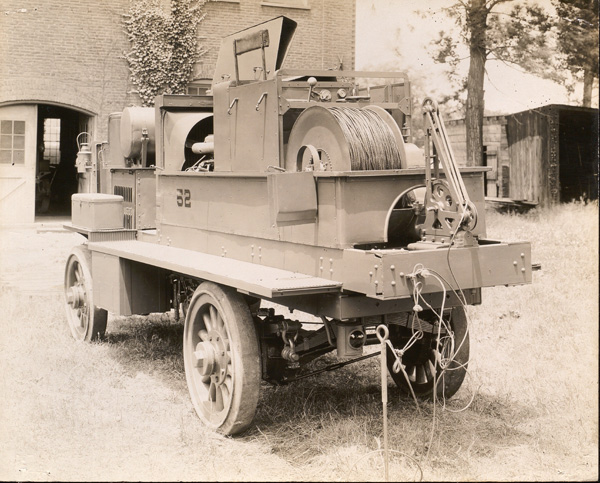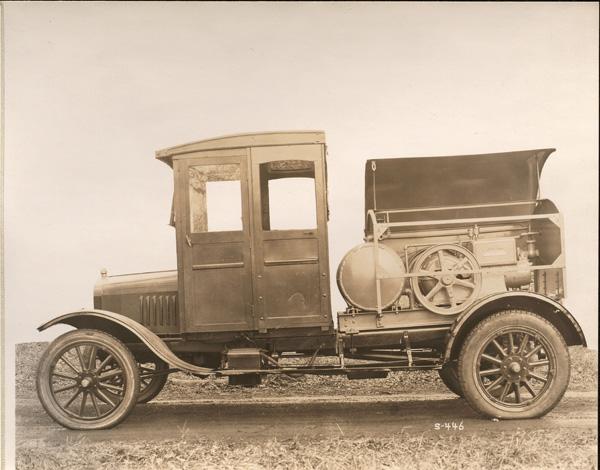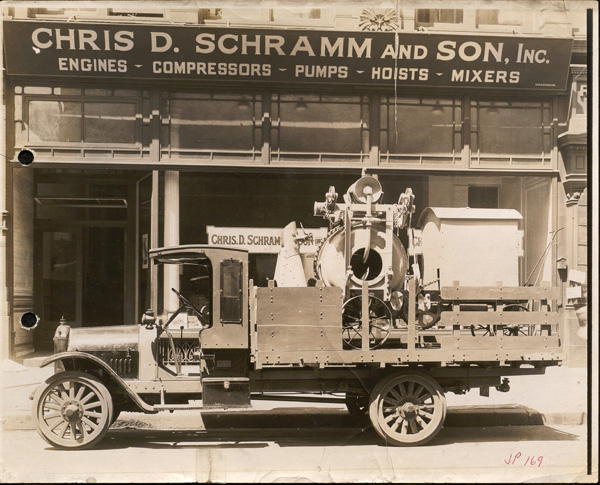The history of Schramm, Inc., dates back to 1900, when Chris D. Schramm and Emil Maerky founded the Schramm & Maerky Machine Shop in Philadelphia to service Otto Gas Engines. In 1901, the company developed an electric ignition head for the Otto Engine and earned a patent for the invention. The electric ignition improved the operation of the widely used gas engine and brought the company customers beyond its local market in Philadelphia. 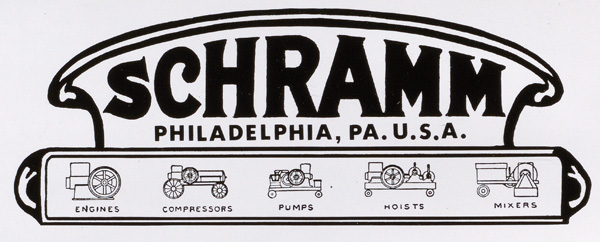
As the business grew, in 1902, it moved to larger premises, and, for unclear reasons, the partnership between Schramm and Maerky ended. After the split, the company was renamed Christian D. Schramm Co. In 1905, the company expanded its operations beyond repair work, selling gas engines and related equipment. In 1907, Henry Schramm, who had been with the company since 1900, became a partner, leading to the company’s name change to Chris D. Schramm & Son.
By 1908, the company moved again to a larger location on N. 4th St. in Philadelphia. During this time, it developed the first portable air compressor at the request of a customer, George W. Davidson, a monument dealer in Wilmington, Delaware. The portable air compressor was designed to efficiently update cemetery headstones by allowing engraving at the site rather than transporting heavy stones to a workshop. The innovation was widely adopted in the stone-cutting industry, establishing Schramm as an innovator in portable air-compression technology.
Between 1910 and 1912, Schramm & Son developed and improved their portable air compressor. The company continued to expand, establishing dealerships to sell its products and opening new showrooms in Philadelphia and a branch office in New York City in 1916-1917.
In 1917, Chris D. Schramm & Son moved to the former West Chester Engine/Rockwell Manufacturing facility in West Chester, Pennsylvania, and incorporated as Chris D. Schramm & Son, Inc. The larger space allowed for increased in-house manufacturing and growth. A part of the financing to pay for the purchase of the new facility came from stock sold to local West Chester investors, including P.M Sharples, owner of the Sharples Separator Works. Over time, the stock owned by these non-employees was purchased by the company. By 1960 all shares would be owned by employees. In later years, employees would describe the company as “employee owned”.
Between 1918 and 1919, the West Chester facility played a vital role in supporting the Allied Army during World War I by manufacturing balloon hoists used for reconnaissance in Europe. It also built low-pressure air compressors for underwater salvage and repair.
In 1919, it introduced its first truck-mounted air compressor, a model 30 air compressor mounted on a Ford Model TT truck. Additionally, during this period, it developed the EnBloc air compressor, an efficient and compact design, with the engine and air compressor in the same compact casting. To meet the growing demand for construction equipment, it introduced compressor models 10, 20, 30, and 40, offering a range of options suitable for various types of construction and industrial pneumatic tools.
Recognizing the importance of employee welfare, Schramm established a bowling league in 1917, which soon expanded into other sports, fostering a sense of community among employees. Emphasis on employees' well-being became an essential component of Schramm management that lasted for the company’s entire history.
Jump to: 1920-1940 | 1940-1960 | 1960-1980 | 1980-2000 | 21st Century
PHOTOGRAPHS : 1900 to 1920


